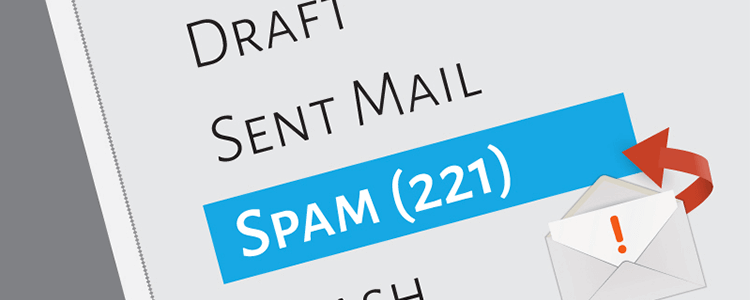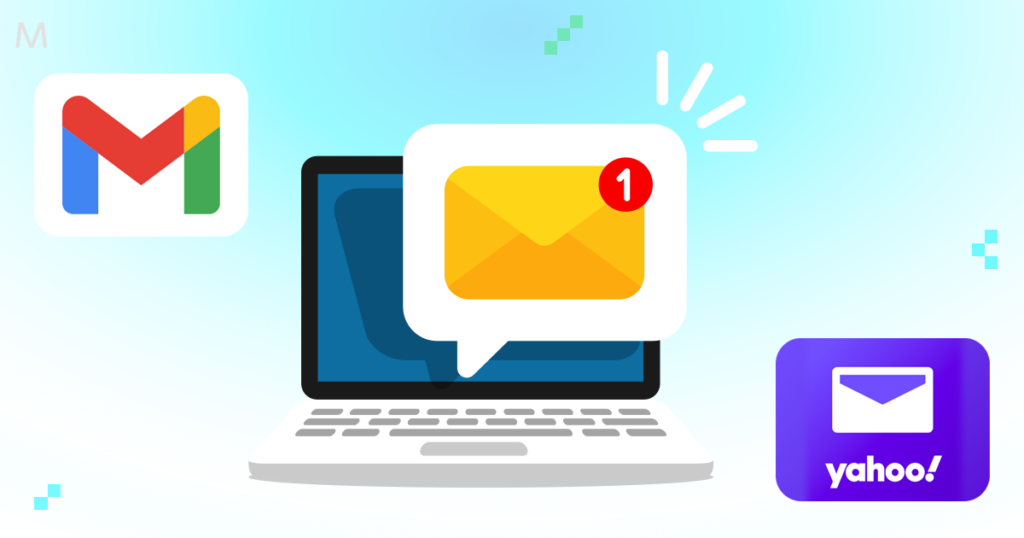Beginning this February, Google and Yahoo will implement new guidelines for bulk email senders.
These guidelines focus on three main areas: authenticating outgoing emails, simplifying the process of unsubscribing from email lists, and monitoring reported spam rates. The changes require senders to verify their identity and provide an easy opt-out method when sending to a large number of email addresses.
This development sparked interest among email marketers in both Business-to-Business (B2B) and Business-to-Consumer (B2C) sectors. As these requirements roll out, they are expected to significantly impact email practices and user experiences. Google’s dominance in the email service realm gives it the power to enforce these changes, affecting email marketers globally.
This short article intends to introduce the upcoming changes for email senders, outlining the specific areas of focus in the guidelines.
What is a Bulk Sender?
In an early October announcement, Google provided a clear definition of bulk senders as those who send more than 5,000 messages to Gmail addresses within a single day.
New Requirements for Bulk Senders
Google has heavily relied on artificial intelligence (AI) tools to combat spam, blocking tens of billions of emails daily. However, the same AI tools that contribute to spam detection are becoming part of the problem. Generative AI tools with large language models can now craft convincing emails indistinguishable from human writing.
This presents a dilemma for Google’s spam filter, designed to identify automatically generated emails. To address the challenge, Google is shifting its strategy to a more human-centric approach, requiring senders to authenticate their identity. While this won’t eliminate spam entirely, it aims to prevent it from cluttering inboxes.
• Authenticating Outgoing Emails
To ensure secure communication, Google will mandate bulk email senders to adopt what Google terms as “well-established best practices” for sender authentication. This step aims to close possible gaps that attackers exploit, posing a threat to all email users.
Three key mechanisms—Sender Policy Framework (SPF), Domain Keys Identified Mail (DKIM), and Domain-based Message Authentication, Reporting, and Conformance (DMARC)—collaborate for effective email authentication.
The email authentication requirements extend to all emails sent by an organization using the domain and are not limited to marketing emails.
1. Sender Policy Framework
Spammers sometimes fake your organization’s identity to send misleading messages, a practice known as spoofing. These deceitful messages can be used for harmful purposes, such as spreading false information, delivering malicious software, or tricking people into sharing sensitive details.
Sender Policy Framework safeguards your domain from spoofing, and helps prevent your outgoing messages from being marked as spam by receiving servers. SPF specifies the mail servers that are allowed to send email for your domain. Receiving mail servers use SPF to verify that incoming messages that appear to come from your domain were sent by servers you authorized.
2. Domain Keys Identified Mail
History tells us that in ancient times, people communicated by sending letters sealed with a stamp. An intact stamp signaled that the letter remained unaltered. Similarly, in digital realms nowadays, to verify that email content remains unchanged, a DKIM signature is applied to sign emails. Domain Keys Identified Mail standard guarantees that messages remain unaltered during their journey between the sender and recipient servers.
3. Domain-based Message Authentication, Reporting, and Conformance
With the surge in the social internet and widespread e-commerce, spammers and phishers are financially motivated to compromise user accounts for theft of sensitive information. Email spoofing, where criminals exploit user trust by impersonating well-known brands, has become a prevalent tactic.
Users struggle to distinguish real messages from fake ones, making it challenging for mailbox providers to make accurate delivery decisions. Senders lack scalable ways to receive feedback on authentication practices, hindering progress in SPF and DKIM deployment. DMARC resolves these issues by fostering collaboration between email senders and receivers, enhancing email security, and protecting users and brands from costly abuse.
• Simplifying the Process of Unsubscribing from Email Lists
Google’s definition of spam may differ from the technical one, encompassing any unwanted and irrelevant emails. The positive aspect of Google’s changes includes a requirement for senders to provide a one-click unsubscribe link, eliminating convoluted opt-out processes often used by marketers.
One-click unsubscribe lets people quickly and easily opt out of marketing or promotional messages. One-click unsubscribe also helps email senders maintain a low spam rate, which improves message delivery.
Google’s Unsubscribe Requirements mandate bulk email senders to make it easy for Gmail recipients to unsubscribe with just one click and process the unsubscription requests within a two-day timeframe.
• Monitoring Reported Spam Rates
For senders marked as spammers, Gmail will block their emails after reaching a specific threshold.
Google stipulates that bulk senders must maintain a reported spam rate below 0.10%, avoiding rates of 0.30% or higher. Marketers are advised to pay attention to send times and utilize preference centers to mitigate the risk of legitimate messages being flagged as spam.
Reporting an email as spam is easy. This requirement stands out from authentication and unsubscribe links. It’s based on what the receiver finds valuable, somewhat beyond the sender’s control.
Consider receiving an email from an online store offering a discount on a product you recently viewed. If you find the email helpful and relevant, you probably won’t mark it as spam. However, if the product no longer interests you, you might consider it spam and report it. The decision often depends on the perceived value and relevance of the email content from the recipient’s unique perspective.

Why New Requirements
For years, Google has worked to enhance email security and reduce unwanted messages, often sent in large volumes for advertising, phishing, or malicious purposes.
The recent changes are geared towards offering enhanced protection for email recipients and strengthening the implementation of anti-spam filters.
Beyond combating spam, these requirements aim to protect the inbox as a revenue source for companies like Google.
This strategic move emphasizes the importance of maintaining engagement metrics and ensuring the inbox remains central to users’ daily activities.
Consequences for Non-Compliance with the Guidelines
For messages to be reliably delivered, bulk senders must adhere to the email sender guidelines. Failure to meet these requirements may result in message rejection or delivery to recipients’ spam folders.
When Do the Changes Come into Effect?
Gmail’s changes kick in on February 1, 2024. They recommend following the new rules before that date. Yahoo Mail’s changes are a bit less specific, saying they’ll happen in the first quarter of 2024.
What is the Timeline for Enforcement of Sender Guidelines?
Bulk senders failing to adhere to the email sender guidelines will face a gradual and progressive enforcement process.
Beginning February 2024, non-compliant bulk senders will encounter temporary errors, accompanied by error codes, affecting a small percentage of their email traffic. These errors serve as indicators for senders to identify and address email traffic that deviates from our guidelines.
In April 2024, Google will initiate the rejection of a percentage of non-compliant email traffic, progressively increasing the rejection rate. For instance, if 75% of a sender’s traffic aligns with the requirements, Google will gradually reject a portion of the remaining 25% that falls short of compliance.
Bulk senders are granted until June 1, 2024, to implement a one-click unsubscribe feature in all their commercial and promotional messages.
Spam Rate Calculation Period
The spam rate is calculated daily. To ensure expected message delivery, senders should maintain a spam rate below 0.1% and prevent it from reaching 0.3% or higher, as outlined in the email sender guidelines.
Unsubscribe Response Time
To minimize spam reports, safeguard your sending reputation, and maintain a healthy email list, it’s advised to process unsubscribe requests within 48 hours—a reasonable timeframe for removing recipients from your mailing list.
This practice is particularly crucial for frequent senders of marketing messages, leading to enhanced email delivery and increased value for engaged individuals desiring to receive messages from you.
Bulk Sender Email Support
Bulk senders that meet all requirements described in the email sender guidelines can submit an escalation for email delivery issues. Before contacting tech support, make sure you’re following all sender guidelines. Starting in February 2024, Google won’t provide mitigation for email delivery issues to senders that don’t meet the guidelines.
Sender Guidelines for Google Workspace Accounts
All senders, including Google Workspace users, must meet the requirements when sending messages to personal Gmail accounts.
Adopting Multiple Channels Approach
Using an omnichannel strategy helps navigate new bulk sender restrictions. By incorporating sales outreach, social media, website, and advertising, marketing teams can better understand how recipients behave, compare channel effectiveness, and optimize overall strategies for improved performance.
As a Contact Consumers customer, if you would like a more tailored understanding of how to implement email marketing in your specific business, let’s have a conversation. We’re here to help you meet these new requirements.




